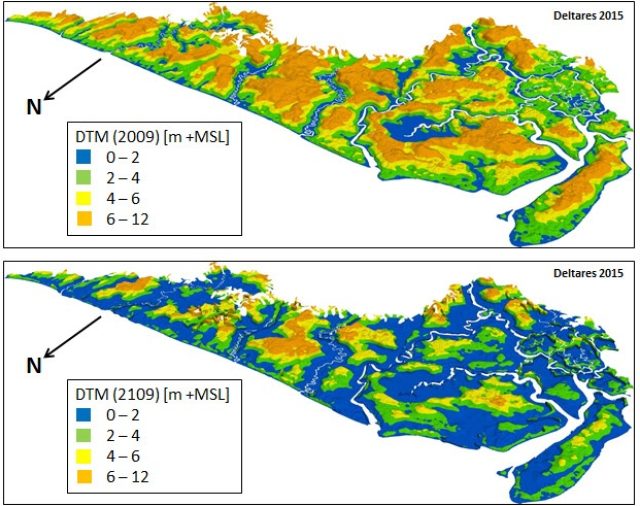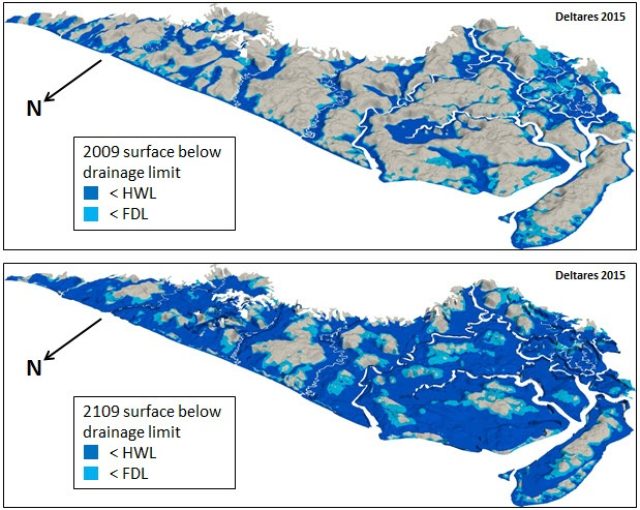Flooding projections for oil palm plantations in the Rajang Delta peatlands, Sarawak, Malaysia
Deltares experts are investigating how deforestation and drainage of tropical peatlands in Sarawak, Malaysia will cause subsidence in the future. Subsidence leads to increased water management problems and flooding.
Since peat is not ‘land’ in the common sense but an unstable mix of water (90%) and carbon (in the vegetation remains), it will inevitably disappear when drained. As the bottom of the peat is often near Sea level, inundation and loss of agricultural production is common in such areas. This land loss is the reason that expansion of peatland drainage for agriculture was ceased in Europe and the USA by the mid-20th century. In Malaysia and Indonesia, however, development of peatlands for agriculture (mostly oil palm and Acacia plantations) has only recently started, and without considering the future flooding impacts.
A study area of 850,000 hectares (see figures below) is located along in the Rajang River Delta along the coast of Sarawak, the Malaysian part of Borneo. From 2000 to 2014, the cover of industrial oil palm plantations increased from 6 % to 47 %, while the area of swamp forest decreased from 56 % to less than 16 %. The remaining area is also mostly drained, meaning that the entire area is now subsiding.

A model of surface elevation (DTM) in the study area, above Mean Sea Level (+MSL) was created from IFSAR radar data.
The surface model was lowered in steps of 3.5 cm per year (3.5 metres in 100 years) over the coming 100 years (from 2009 to 2109), simulating how the future landscape subsides towards sea and river flood levels.

Model results suggest that flood risk was already high, i.e. the surface below the drainage limit, in 29 % of oil palm plantations by 2009. This is projected to increase to 42 % in 25 years, 56 % in 50 years, and 82 % in 100 years. It is predicted that at some point, oil palm production will have to be abandoned.
It is recommended that to ensure a more sustainable future for the area, and other tropical peatlands like it, non-drained land use alternatives should be urgently considered. Conserving the scarce remaining forest in the area may help in rehabilitation of the area in the longer term, as a source area for restoring natural systems.

You have not yet indicated whether you want to accept or reject cookies. This means that this element cannot be displayed.
Or go directly to:
This study was commissioned by Wetlands International under the project Sustainable Peatlands for People and Climate, funded by Norad.

